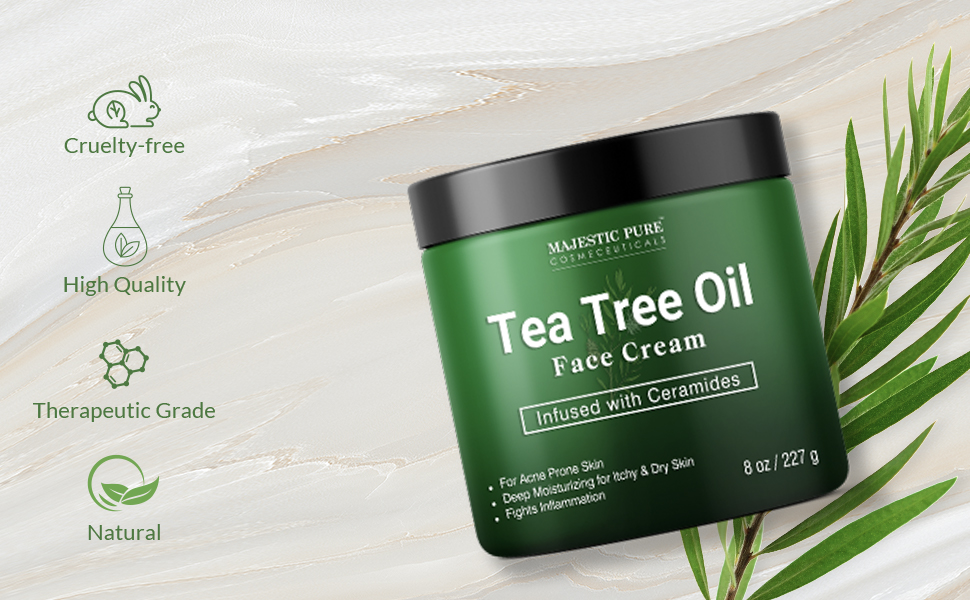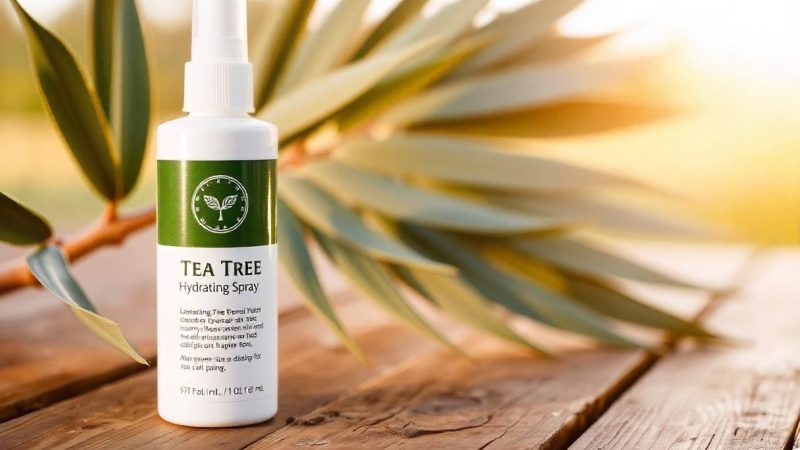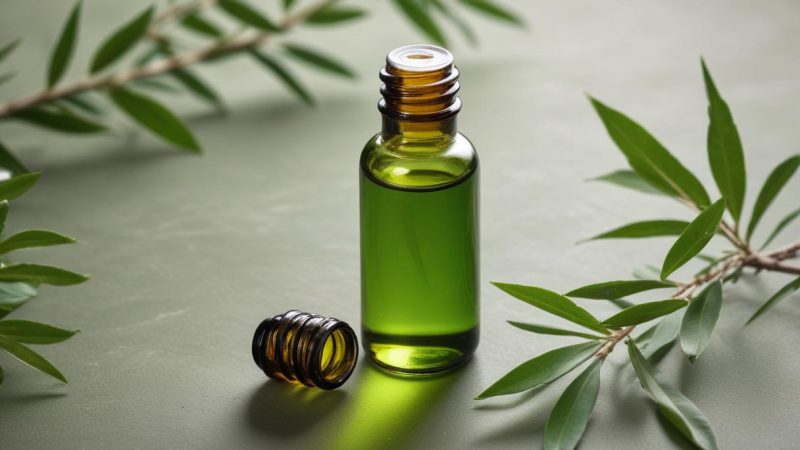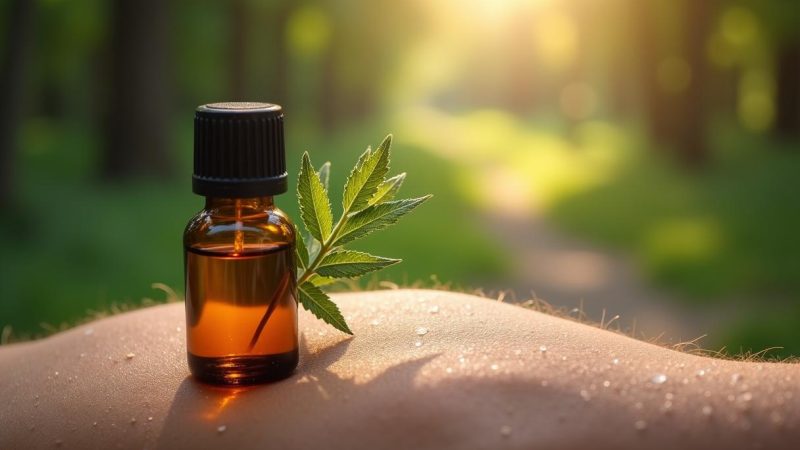DIY Recipe: Tea Tree Oil Face Cream for Dry & Itchy Skin, Acne, and Scars

Tea tree oil has long been prized for its natural healing properties, especially when it comes to skincare. Rich in antibacterial, anti-inflammatory, and antifungal compounds, tea tree oil is particularly effective in treating skin conditions like acne, dry and itchy skin, and scars. Creating your own DIY tea tree oil face cream is a fantastic way to nourish your skin while addressing specific concerns naturally. In this article, we’ll provide an easy-to-follow recipe and explain how each ingredient works, supported by reliable sources.
Why Use Tea Tree Oil for Skin?
Tea tree oil is known for its many skincare benefits, including:
- Antibacterial and Antifungal Properties: Tea tree oil can combat bacteria that cause acne and other skin infections. It has been shown to reduce Propionibacterium acnes, a type of bacteria that triggers acne inflammation.
- Anti-Inflammatory Effects: Its natural anti-inflammatory compounds help reduce redness, swelling, and irritation, making it a go-to remedy for skin conditions like eczema, psoriasis, and itchy, irritated skin.
- Scar Reduction: Tea tree oil promotes skin regeneration, helping to diminish acne scars and other blemishes by encouraging healthy skin cell turnover.
Benefits of DIY Tea Tree Oil Face Cream
- Hydrates Dry Skin: Combining tea tree oil with nourishing ingredients like shea butter or coconut oil helps hydrate and soothe dry, flaky skin without causing irritation.
- Reduces Acne Breakouts: The antibacterial properties of tea tree oil help fight acne-causing bacteria, while its anti-inflammatory effects calm breakouts and reduce redness.
- Heals Scars and Blemishes: Regular use of tea tree oil helps fade acne scars and other skin marks by promoting healing and regeneration.
- Soothes Itchy Skin: This face cream recipe is ideal for those who suffer from eczema, dermatitis, or simply itchy skin. Tea tree oil works to relieve itching and inflammation naturally.
Ingredients for DIY Tea Tree Oil Face Cream
To make a highly effective face cream, we’ll blend tea tree oil with natural moisturizers and soothing agents.
Ingredients:
- Shea Butter (1/4 cup): Rich in vitamins A and E, shea butter provides deep hydration to the skin, helping to repair and soften damaged skin while reducing inflammation.
- Source: Shea butter is proven to promote collagen production, which aids in skin elasticity and repair (International Journal of Molecular Sciences, 2017).
- Coconut Oil (2 tbsp): Coconut oil is a natural emollient that moisturizes the skin and helps repair the skin’s barrier. It’s also antibacterial and antifungal, which supports tea tree oil’s effects.
- Source: Studies confirm coconut oil’s effectiveness in treating atopic dermatitis and its antimicrobial activity (Dermatitis, 2014).
- Jojoba Oil (2 tbsp): Jojoba oil closely resembles the skin’s natural sebum, making it an excellent choice for balancing oily and acne-prone skin. It also provides light hydration without clogging pores.
- Source: Journal of Dermatological Science (2005) shows that jojoba oil has anti-inflammatory properties and enhances skin repair.
- Aloe Vera Gel (2 tbsp): Aloe vera is known for its soothing and cooling properties. It calms irritation and provides a burst of hydration for dry and itchy skin.
- Source: Aloe vera accelerates wound healing and reduces skin inflammation (Indian Journal of Dermatology, 2008).
- Tea Tree Essential Oil (10 drops): The star ingredient, tea tree oil, provides potent antibacterial, antifungal, and anti-inflammatory properties, making it perfect for treating acne, itchiness, and scars.
- Source: According to Clinical Microbiology Reviews (2015), tea tree oil is effective in reducing Propionibacterium acnes, the bacteria responsible for acne.
- Vitamin E Oil (5 drops): Vitamin E is a powerful antioxidant that promotes skin healing and reduces scarring. It also helps preserve the shelf life of your DIY cream.
- Source: Studies show that topical vitamin E promotes faster wound healing and improves skin texture (Journal of Molecular Medicine, 2016).
DIY Recipe: How to Make Tea Tree Oil Face Cream
Instructions:
- Melt the Shea Butter and Coconut Oil: In a double boiler or microwave, gently melt the shea butter and coconut oil until fully liquefied. Stir well to combine.
- Add Jojoba Oil and Aloe Vera: Once the shea butter and coconut oil are melted, remove the mixture from heat and allow it to cool slightly. Stir in the jojoba oil and aloe vera gel until thoroughly combined.
- Mix in Tea Tree Oil and Vitamin E: After the base oils and gel have cooled to room temperature (but before they start to solidify), add the tea tree oil and vitamin E oil. Stir gently to ensure the oils are evenly distributed throughout the mixture.
- Whip the Mixture: For a lighter, whipped texture, use a hand mixer or whisk to whip the cream for 2-3 minutes. This step is optional but helps create a smoother, fluffier consistency.
- Store in a Jar: Transfer the finished cream into a clean glass jar with an airtight lid. Store it in a cool, dark place, or refrigerate for a longer shelf life. The cream will solidify at room temperature but melt upon contact with your skin.
How to Use Tea Tree Oil Face Cream
- For Dry and Itchy Skin:
- Apply a small amount of the cream to your face and any dry, itchy areas, such as the elbows or knees.
- Massage it gently into the skin in circular motions until fully absorbed.
- Use daily after cleansing for best results, especially on dry or flaky patches.
- For Acne-Prone Skin:
- Cleanse your face thoroughly before applying the cream.
- Dab a pea-sized amount of the cream on areas prone to acne or breakouts, focusing on the forehead, chin, and jawline.
- Tea tree oil can reduce acne inflammation and kill acne-causing bacteria over time.
- For Scars and Blemishes:
- Apply a small amount of the cream directly to acne scars or other blemishes once or twice daily.
- Consistent use can help fade scars and improve skin texture by promoting healing and collagen production.
Safety Tips and Precautions
- Patch Test First: Tea tree oil can be potent, so it’s important to do a patch test before applying this cream to your face. Apply a small amount to the inside of your wrist or behind your ear to check for any allergic reactions. Wait 24 hours before full application.
- Dilution is Key: Never apply undiluted tea tree oil directly to your skin, as it may cause irritation or allergic reactions. In this recipe, the tea tree oil is sufficiently diluted with other carrier oils to ensure safe use.
- Avoid the Eye Area: Be cautious when applying this cream around your eyes, as tea tree oil can be irritating if it gets too close to sensitive areas.
Final Thoughts
This DIY tea tree oil face cream is a versatile and natural solution for a variety of skin concerns, from acne and scars to dry and itchy skin. With the powerful combination of tea tree oil’s antibacterial properties and soothing, moisturizing ingredients like shea butter, aloe vera, and jojoba oil, this cream is designed to restore skin health and leave your complexion feeling nourished and balanced. By incorporating this homemade cream into your skincare routine, you can enjoy the benefits of tea tree oil in a gentle, effective, and all-natural formula.
Sources:
- International Journal of Molecular Sciences. (2017). Shea Butter’s effects on skin repair and collagen production.
- Dermatitis. (2014). Coconut oil’s benefits in treating atopic dermatitis.
- Journal of Dermatological Science. (2005). Jojoba oil’s role in skin repair and anti-inflammatory properties.
- Indian Journal of Dermatology. (2008). Aloe vera’s efficacy in wound healing and inflammation reduction.
- Clinical Microbiology Reviews. (2015). Tea tree oil’s antibacterial and antifungal properties.
- Journal of Molecular Medicine. (2016). Vitamin E’s antioxidant effects and its role in scar healing.






